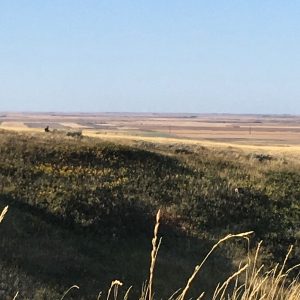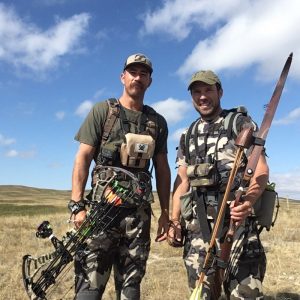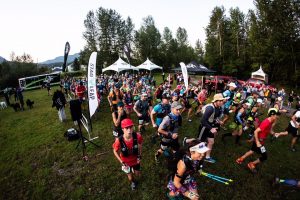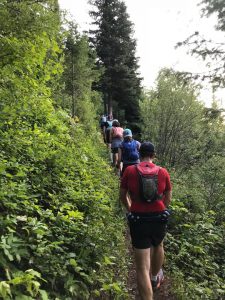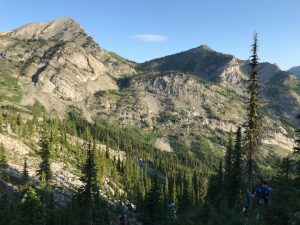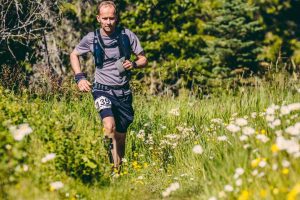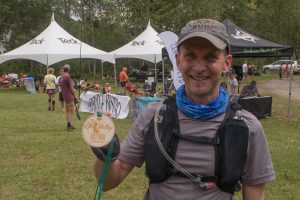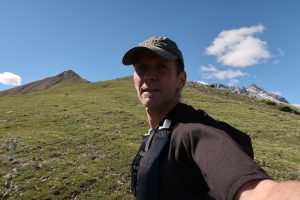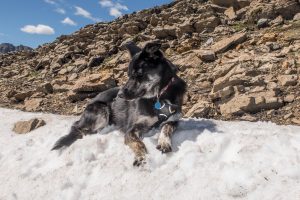After 12 years of accumulating priority points, I finally drew a bull moose tag in an area South of here, consisting of a mixture of private ranches, grazing leases and crown land. Here is the account of our first attempt outsmarting a moose.
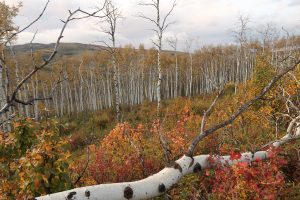
Back from a short moose hunt. Kyle (whose trailer we were using) fell rather ill with a cold/flu, and he’d have more fun on his couch while his wife brought him cold beverages and cough syrup, than lying in his sleeping bag, wondering if I was finding any big bulls.
The first night, with Kyle still semi-spiffy, we saw a few moose, nothing particularly big (I’m not opposed to shooting a small one), and didn’t really have time to make a play on any of them. This is ranching country in the foothills. Rolling hills covered with mostly aspen and some evergreens, with willows in the bottoms, where oftentimes there is a trickle of water, augmented by beaver, or turned to mud by cattle. Elk, moose, mule deer and whitetail, coyotes, some bears, cougars inhabit these hills. You can spot animals a long way off at times,and light may not permit an approach that same day.
In the morning, we bumped a sizeable bull right before first light. Rookie mistake, and the bull acted like we were rookies too, only reluctantly leaving his favourite browsing bush. But the cow he was keeping company left, therefore so did he. I checked my watch: 9 min before legal. Would have been a hell of a trick shot with so little light.
We made two attempts to call in bulls with love songs. It didn’t work. After a quick dash to the trailer for coffee and lunch, we were back in business, this time headed towards a sizeable clump of willows across from a decent mixed aspen/pine grove, separated by a secluded little meadow, all situated above a little creek. A little piece of moose heaven.
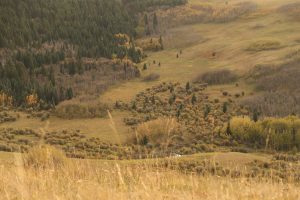
A decent rain shower has doused us on the way in, and we were standing there dripping, wondering about where to set up to watch proceedings, when suddenly we heard a bull grunt, and not too far off either. With hoods over the ears, we had trouble locating the direction at first. Then I saw an antler flash above the willows, heard more grunts, and the breaking of branches. He came in with attitude and was not 100 yards away.
Caught with our pants down, even though all layers of pants were firmly belted up, we scrambled. I pulled the cover off the arrows, removed gloves, dug for my tab, grabbed an arrow; Kyle pulled the elk shoulder blade from the back of my pack. While I threw the first insults at the bull (“Your mother mated a donkey!”), Kyle started demolishing an innocent willow shrub.
The bull needed little encouragement. More ruckus emerged from the willows, grunting, thrashing, breaking. We needed more visibility, he’d be in our lap in ten seconds! As we moved, the noise moved too it seems, and I told the bull some more of my thoughts (“Your girlfriend would rather have sex with a skunk!”). We broke through to the meadow, peeked ahead, and there he was.
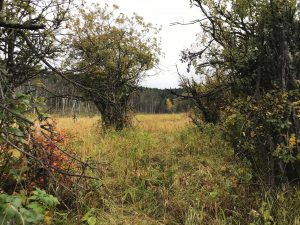
This was like the Jim Shockey hunting show, only much faster. We didn’t have time to retreat or move as he already had his eyes fixed on us and came in swaying his head, ready to dole out some painful lessons to whomever said those things about his mama and his fiancée. Within seconds he was level with our position. Thirty yards, perfect distance, still slightly quartering towards, I moved to start the draw.
As if stuck by lightning, the bull stopped, looked me in the eye, and whirled. No chance for a shot. How the hell? After a few quick strides the bull slowed down, and retreated in the the aspens across the meadow, 80 yards out. We tried a mixtures of calls, but he would no longer respond. Ever so slowly he withdrew until we no longer saw him. Later that night we saw him again, now in the company of two cows, followed by a young bull, which he regularly drove away.
Fast forward to then next morning. Kyle being a little feverish, I went out alone, and quickly spotted a decent bull at the bottom, feeding on a willow. He was unapproachable, but perhaps he would respond to calls. At first, once I had reached the edge of cover, I thought he had vanished, but not much later the moaning of a moose cow drew my attention to a scene of sexual harassment, in a clearing between to bright-yellow aspen groves.
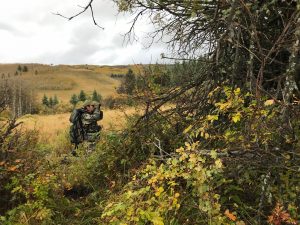
Once the bull figured out that his lady was not going to give it up any time soon, everybody went back to feeding. With an attitude of “death or glory” I hurried back down valley, crossed the treeless bottom out of sight, hopped the creek amidst the willows, and cruised up the opposite slope until I was just about level with, but still 400 yards from the moose. A slow approach brought me 30 feet from the edge of the last trees, with the moose suspected to be feeding right around the corner.
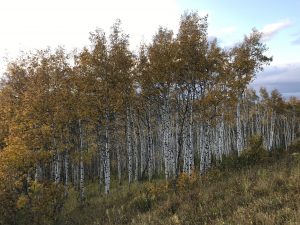
“Right around” could be anything from a long longbow shot, to not-in-this-lifetime number of yards. So the plan was to challenge the bull from here, lure him past the last trees, which would give me a 15-35 yard shot. All doable.
“I have seen street dogs in the slumps of India that had fewer fleas than you!” I yelled at the bull, following by some semi-impressive whacks of the elk shoulder blade. He must have taken that personally because he screamed something back that I didn’t quite catch, and he took it out on an unsuspecting bush near him. “Barbara Streisand’s nose looks better than that of your lady!” More grunting and raking. He grunted, I grunted, I raked, he raked. Grunt, rake, grunt, rake, together we created quite the spectacle.
But it didn’t last. The wind had been iffy all morning, and I think a swirl must have reached his nose, or his girlfriend felt insulted and was leaving or he just got fed up with it. Clearly he didn’t feel the need to come investigate. I tried closing in while grunting, but it was over.
The snow started falling, mostly wet, and the weekend forecast was for many inches of the white stuff. On the way out I picked up an impressive shed. Finding Kyle looking even worse upon my return, we decided to retreat. I will be back in the fight this Wednesday.
Read on: More moose hunting (Part 1)
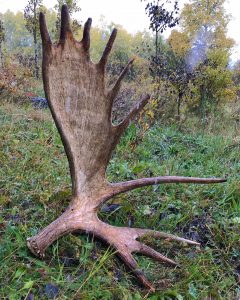
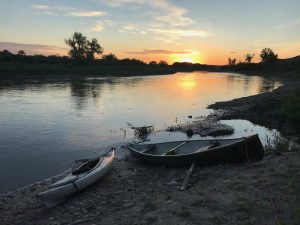
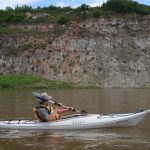
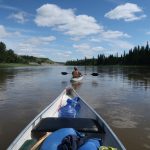
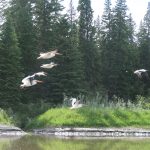
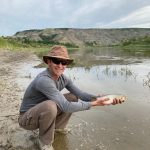
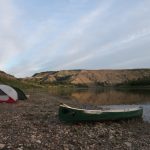
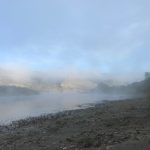
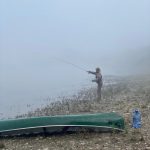
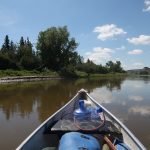
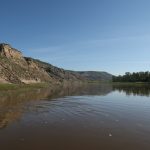
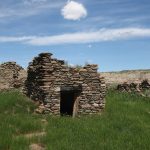
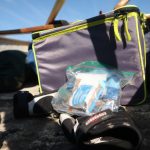
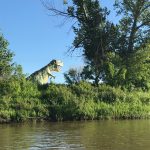
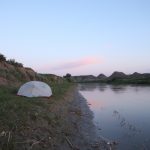
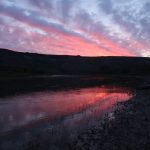
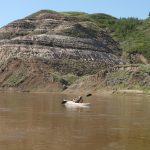
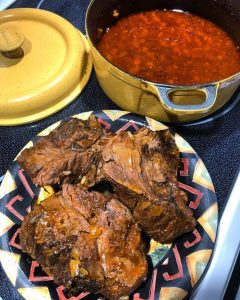
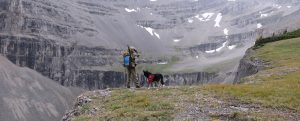 Somewhere along the GDT - 2013
Somewhere along the GDT - 2013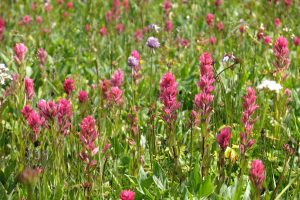 Flowers along the GDT - 2013
Flowers along the GDT - 2013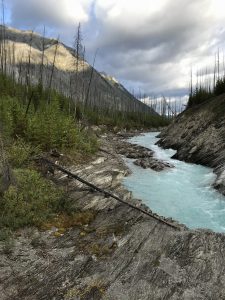 We started at the Floe Lake trailhead around 8:20AM. Right off the parking lot we dropped down to a bridge across the Kootenay River. A small group of runners was getting ready, but we were gone before they got organized. After crossing, I said goodbye to my daughter and the mutts and started a slow jog up a meandering trail that ran through a giant burn. Walking the steeper bits, jogging where I could, I made decent time, passing a few hikers, meeting some backpackers on their way out, and hearing for the first time about a group of runners ahead of me.
We started at the Floe Lake trailhead around 8:20AM. Right off the parking lot we dropped down to a bridge across the Kootenay River. A small group of runners was getting ready, but we were gone before they got organized. After crossing, I said goodbye to my daughter and the mutts and started a slow jog up a meandering trail that ran through a giant burn. Walking the steeper bits, jogging where I could, I made decent time, passing a few hikers, meeting some backpackers on their way out, and hearing for the first time about a group of runners ahead of me.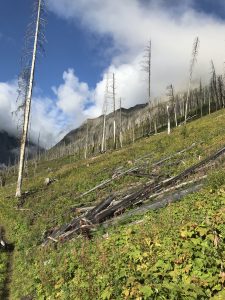 The last few kilometers up to Floe Lake were steep! No running here for me, just grind uphill. Weather was good, legs still felt OK, scenery was great. Floe Lake was rather bleak-looking, bordered by towering grey rock, jutting into a now overcast sky, a stark contrast from the lush, green, sun-filled valley below.
The last few kilometers up to Floe Lake were steep! No running here for me, just grind uphill. Weather was good, legs still felt OK, scenery was great. Floe Lake was rather bleak-looking, bordered by towering grey rock, jutting into a now overcast sky, a stark contrast from the lush, green, sun-filled valley below.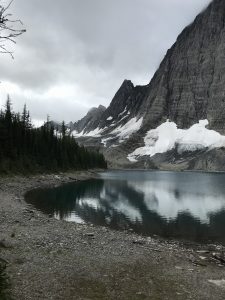
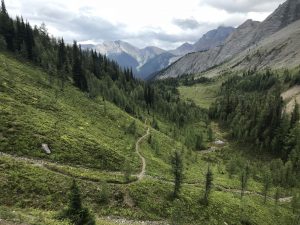
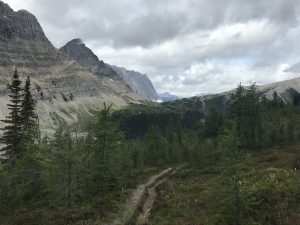
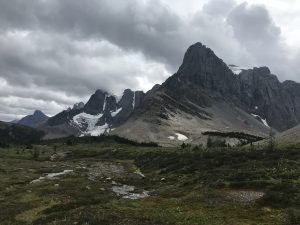
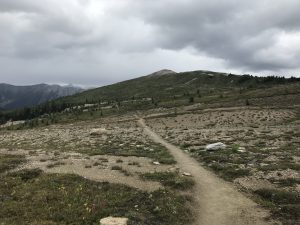
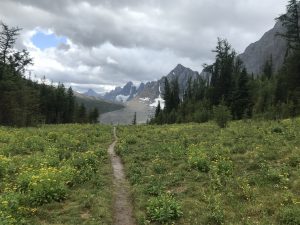
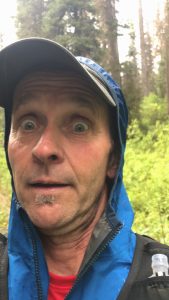
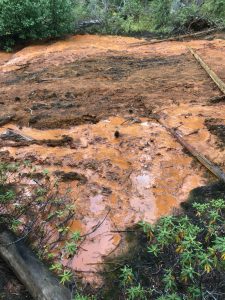
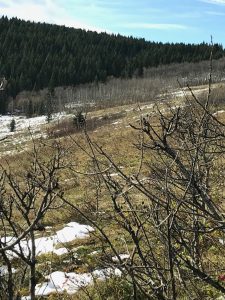
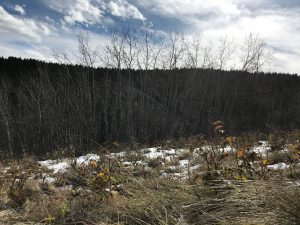
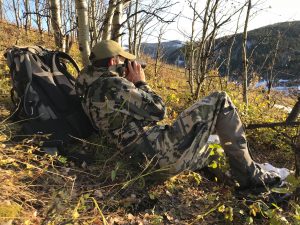






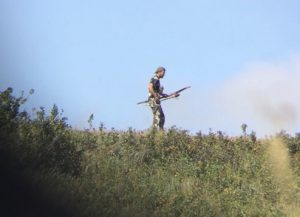 Seven years ago when I started drawing for mule deer I had no intentions of bow hunting, much less with a recurve. I’ve held this tag 3 times before and shot decent bucks and the zone has potential for some big deer, but to get a deer with my bow has become somewhat of an obsession lately and size doesn’t seem to matter now. Opening day was coming soon and Frans was going to be busy scouting for his moose tag, so I got a hold of my buddy Derick Heggie and he was more then happy to come along. He’s recently started in archery hunting as well with a compound and was bringing his bow along too, in case we happened across any does; you can buy a general archery doe tag in this zone.
Seven years ago when I started drawing for mule deer I had no intentions of bow hunting, much less with a recurve. I’ve held this tag 3 times before and shot decent bucks and the zone has potential for some big deer, but to get a deer with my bow has become somewhat of an obsession lately and size doesn’t seem to matter now. Opening day was coming soon and Frans was going to be busy scouting for his moose tag, so I got a hold of my buddy Derick Heggie and he was more then happy to come along. He’s recently started in archery hunting as well with a compound and was bringing his bow along too, in case we happened across any does; you can buy a general archery doe tag in this zone.